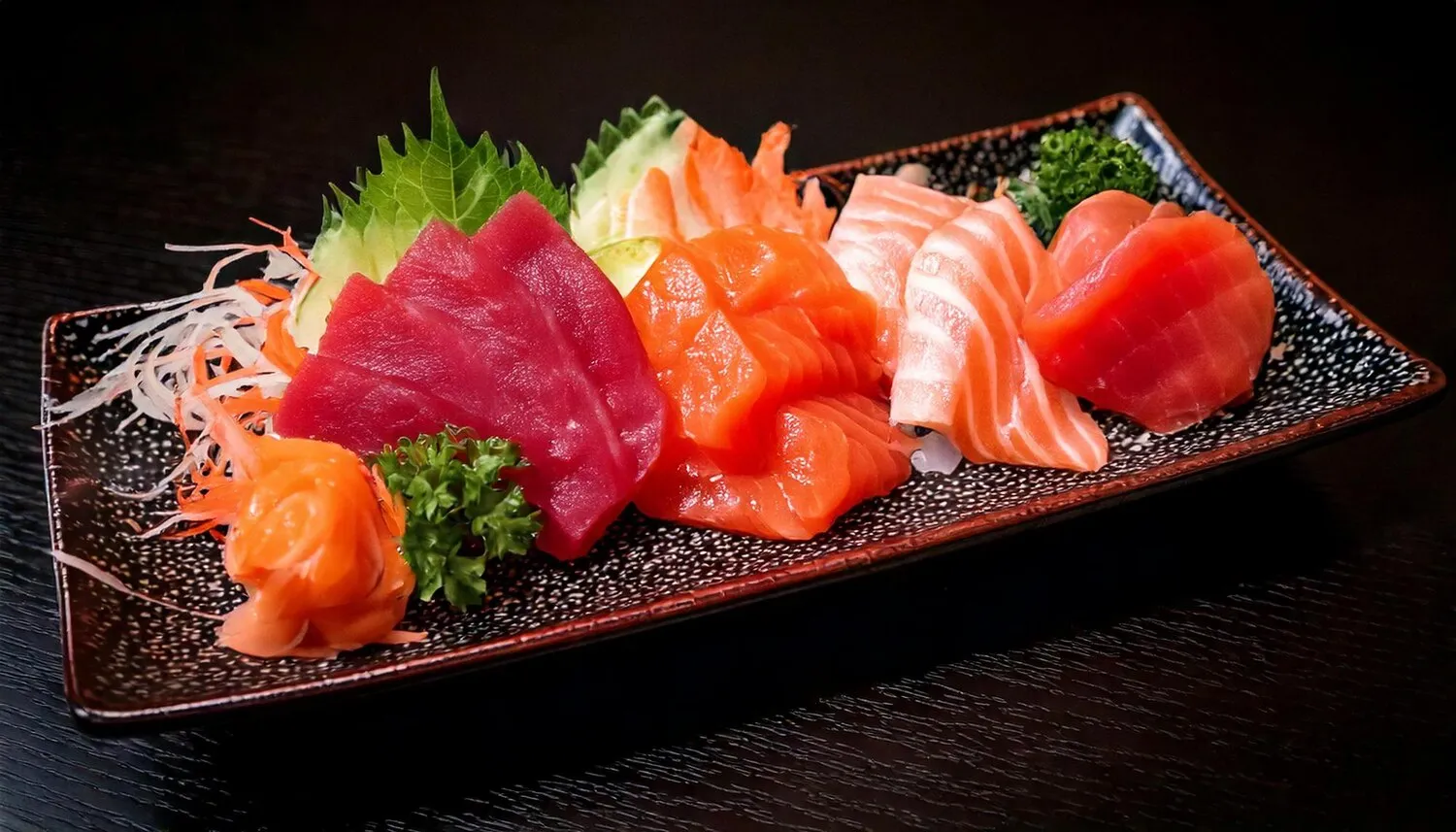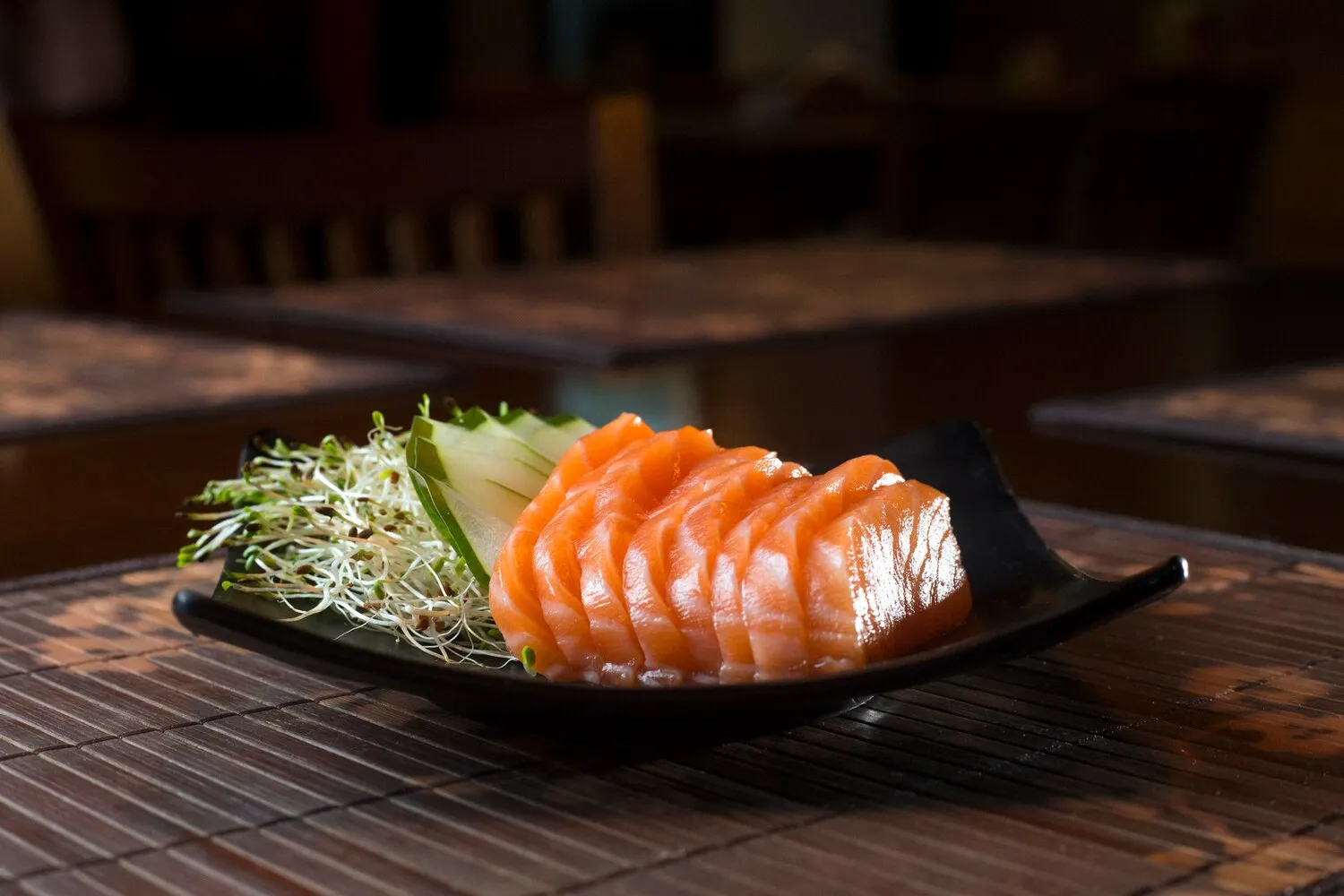
Sashimi
Fresh and high-quality sashimi is a highlight, praised for its flavor and presentation.
Nutrition Facts
* The % Daily Value (DV) tells you how much a nutrient in a serving of food contributes to a daily diet. 2,000 calories a day is used for general nutrition advice.
Toyama
Sashimi's origins can be traced back to the practice of preserving fish in ice cellars. Early forms involved wrapping fish in seaweed to prevent drying. Over time, as preservation techniques improved and culinary skills evolved, slicing fish became an art form, focusing on freshness and presentation.
Sashimi is deeply embedded in Japanese culinary culture, representing a reverence for fresh, high-quality ingredients and the art of precise preparation.
Ingredient Sourcing
The quality and sourcing of the fish are paramount. Chefs often maintain close relationships with fishermen and suppliers to ensure they receive the freshest catches. Seasonal availability also plays a significant role in determining which fish are served.
Cutting Techniques
The way the fish is cut is crucial to both the texture and the presentation of sashimi. Different cuts are used for different types of fish, each designed to highlight the specific qualities of the flesh. The chef's skill in this area is highly valued.
Presentation
Sashimi is not just about taste; it's also about visual appeal. The arrangement of the slices on the plate, the use of garnishes like seaweed and shiso leaves, and the overall aesthetic contribute to the dining experience.
Sashimi is characterized by its pure, unadulterated flavors of the ocean. The focus is on the quality and freshness of the fish, allowing its natural taste to shine.
The flavor profile of sashimi varies greatly depending on the type of fish used. Tuna (maguro) can range from lean and subtly flavored to rich and buttery. Salmon (sake) offers a fatty, smooth, and slightly sweet taste. Yellowtail (hamachi) provides a clean, slightly firm texture with a delicate flavor. White fish such as sea bream (tai) have a mild, refined taste. Common accompaniments like soy sauce, wasabi, and ginger enhance the flavors without overpowering the fish.
Soy Sauce Usage
Dip the fish lightly into the soy sauce; avoid saturating it, as this can mask the delicate flavors. Some believe only the fish, not the rice, should touch the soy sauce if consumed with rice.
Wasabi
Use wasabi sparingly. It is meant to complement, not overpower, the fish. A small amount on the fish itself is preferable to mixing it into the soy sauce. Some believe that the wasabi also helps to kill any bacteria that may be in the fish.
Order of Consumption
Generally, it's recommended to start with the lighter-flavored fish, such as white fish, and then move on to the richer, fattier fish like tuna or salmon. This allows you to fully appreciate the nuances of each variety.
Freshness Matters
Only consume sashimi that you know is very fresh. Look for vibrant color, a firm texture, and a clean, ocean-like smell. If it smells 'fishy' or appears dull, avoid it.
Explore additional Sashimi dishes and restaurants
Explore SashimiDiscover top dining spots and culinary experiences in Paris.
Explore ParisLearn more about the food culture, restaurant scene, and culinary heritage of France.
Explore France
